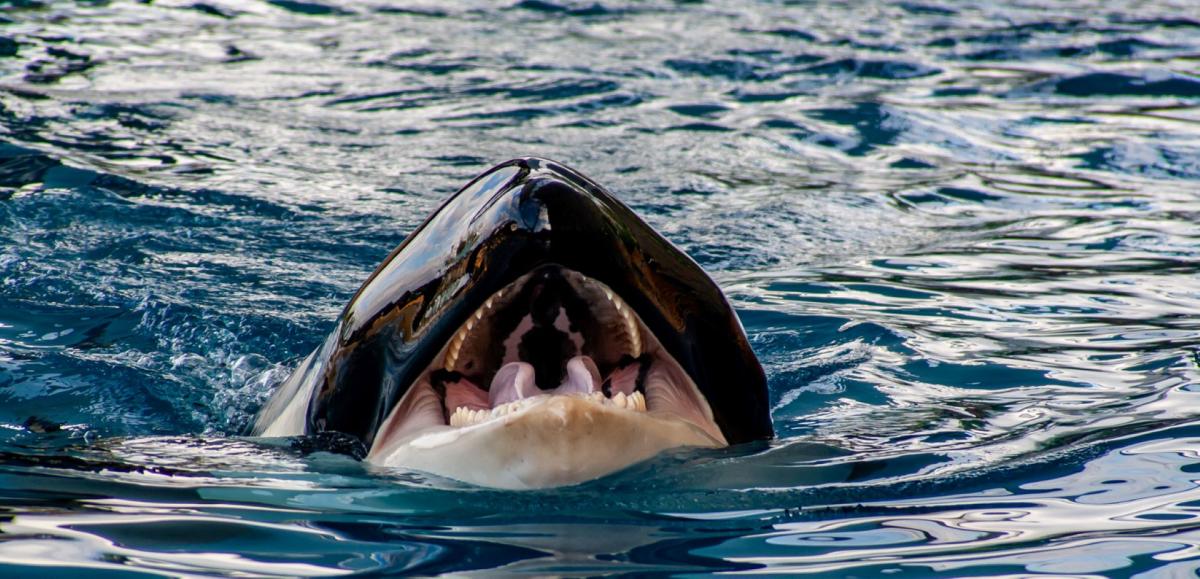
Killer whales in the western North Atlantic are showing more signs of pollution in their bodies than their counterparts in the east. The cause? Pollutants in their diet.
What’s happening?
National Geographic reported on a recent study by Anaïs Remili, a postdoctoral researcher at McGill University, that identified orcas’ diet as a major factor in their high pollutant levels rather than their location in the North Atlantic.
The study focused on persistent organic pollutants — toxic chemicals that accumulate in their bodies — found in the orcas’ blubber. These pollutants, byproducts of industrial and agricultural processes, have harmful effects on orcas such as disrupting immune systems, endocrine functions, reproduction, growth, and brain development.
As orcas are at the top of the food chain, they are the most polluted, making them among the Earth’s most contaminated animals.
“We’ve really come to learn that you are what you eat,” said Peter Ross, healthy waters program director at the Raincoast Conservation Foundation in British Columbia, in the National Geographic article. “The top of the food chain, as exemplified by these long-lived killer whales, is extremely vulnerable.”
Rising temperatures that create warmer Arctic waters may also draw more orcas north, where they’ll feed on high-fat marine mammals, Remili noted.
Why is killer whale contamination concerning?
As the article explained, this issue is critically important due to its huge impact on orcas’ health and the ecosystem.
These contaminants build up as they move higher along the food chain, and the pollutants identified in orcas have damaging effects that can contribute to weakened immune systems and reproductive issues. Older orcas, with lifetimes of pollutant exposure, and vulnerable calves are particularly affected.
The study highlights the danger this presents to predators like orcas, emphasizing the bigger picture around pollution in marine ecosystems. “If we don’t have killer whales anymore, our ecosystems are going to be completely out of balance,” Remili said.
The EPA recognized that wildlife populations can act as “sentinels for human health” with abnormalities or declines found in animal health providing early warning signs for people.
What’s being done to help?
Researchers and organizations are addressing this crisis with immediate action by intensifying efforts to understand and mitigate rising pollutant levels, highlighting the need for ongoing scientific research and public awareness to protect these majestic creatures and preserve the balance of our oceans’ ecosystems.
It is crucial for nations to safely dispose of existing toxic waste, prevent the release of new contaminants, and take action to prevent global warming.
The best action individuals can take is to advocate for stricter regulations on persistent organic pollutants, especially the “Dirty Dozen” as outlined by the EPA.
There are also a variety of great ways to help cool down the planet and reduce Earth-warming pollution, such as switching to electric vehicles and energy-efficient appliances, using renewable energy sources, and buying locally-grown produce.
Join our free newsletter for weekly updates on the coolest innovations improving our lives and saving our planet.
"come" - Google News
December 09, 2023 at 07:45AM
https://ift.tt/NHDdSWb
Study makes troubling revelation about killer whales: 'We've really come to learn that you are what you eat' - Yahoo News
"come" - Google News
https://ift.tt/t8G1NQH
Shoes Man Tutorial
Pos News Update
Meme Update
Korean Entertainment News
Japan News Update
Bagikan Berita Ini














0 Response to "Study makes troubling revelation about killer whales: 'We've really come to learn that you are what you eat' - Yahoo News"
Post a Comment